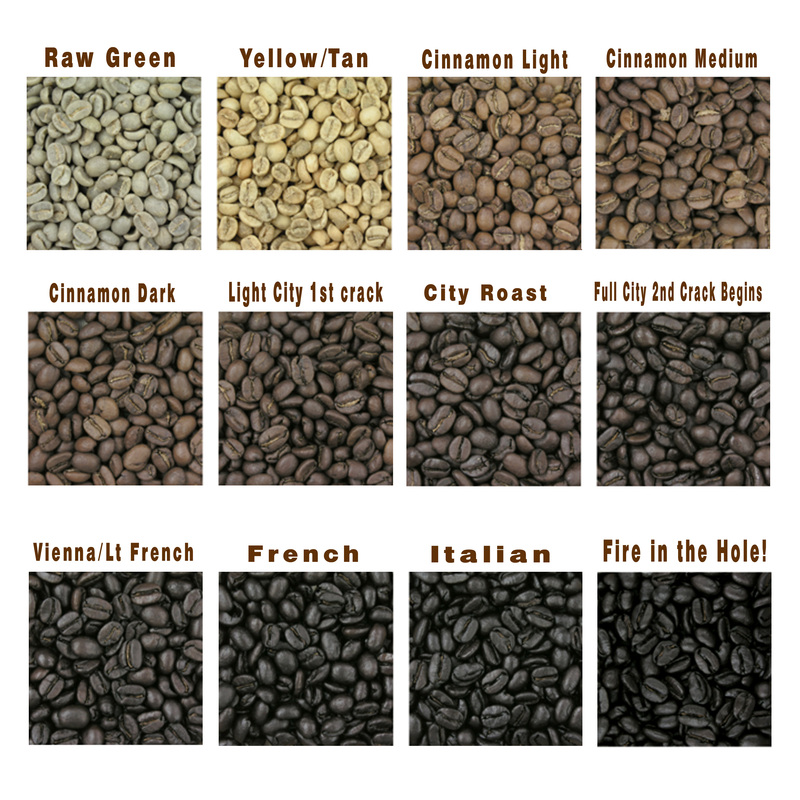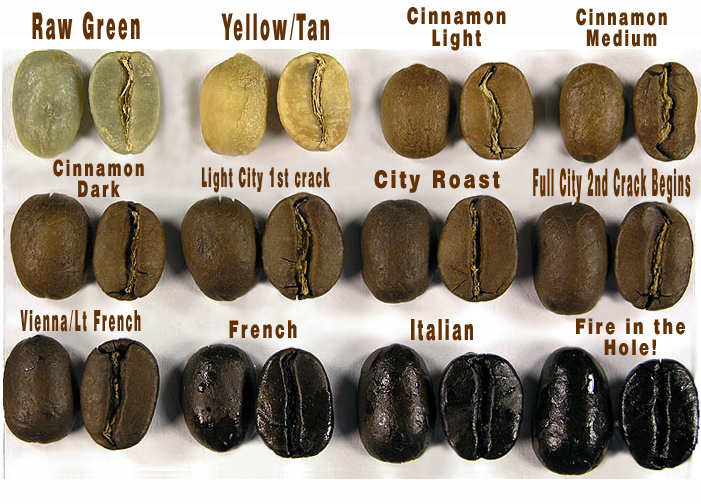This page is here to help point you in the right direction when it comes to roasting green coffee. Coffee roasting is not only and art, but also a science. There is obviously not enough room on this website to go into all the aspects of roasting green coffee, and that is not our intention. Our intention is to give you the very basics to get you started on your way to producing a very fresh cup of coffee. As you continue roasting there will be plenty of sources to turn to if you wish to further your knowledge and understanding about the art, and science of coffee roasting.
Lets get started!
As you begin roasting, there are 2 basic aspects that we want you to focus on. Sight & sound. When grilling an expensive steak we have to watch it like a hawk. There is nothing worse then buying a juicy cut of sirloin and have it shrivel up or worse, burn up because we took our eyes of the prize for a minute. Roasting green coffee is just like that only to a greater degree. There is a 'zone' we must get the coffee bean into for it to be 'drinkable'....but we want it to be more then 'drinkable'...we want amazing!
Here is the simple process that a green bean goes through as it is heated:
Here is the simple process that a green bean goes through as it is heated:
- The green bean will start to yellow and then tan...maybe giving off a hay or toast smell
- As the bean keeps tanning it will begin to lose its water content which you may notice depending on your roasting method
- The tanning bean will then turn a bit darker and you will begin hear some faint cracking (1st crack) while still expelling water content.
- After the first crack (which is now considered drinkable) the bean continues to darken and the sugars begin to caramelize
- as is moves into a full city roast, the bean continues to darken and the oils now start to migrate to the surface
- Now comes the second crack in which the sugars are reaching or have reached their full caramelization and oil becomes visable
- This is the stage where the bean can go very rapidly from a Vienna roast, to a French, to an Italian and finally a 911 fire alert...and when brewed, tastes like regular charcoal water!
Here are the color charts you will want reference as you are roasting your green coffee
Using both of these roasting color charts as a guide, make your target roast right in the middle which would be a light city to a city roast.
Also notice the close up diagrams of the single beans below. There are some tips below that will help you judge where the roast is and give you a better assessment of where the beans are in their roast.
Also notice the close up diagrams of the single beans below. There are some tips below that will help you judge where the roast is and give you a better assessment of where the beans are in their roast.

